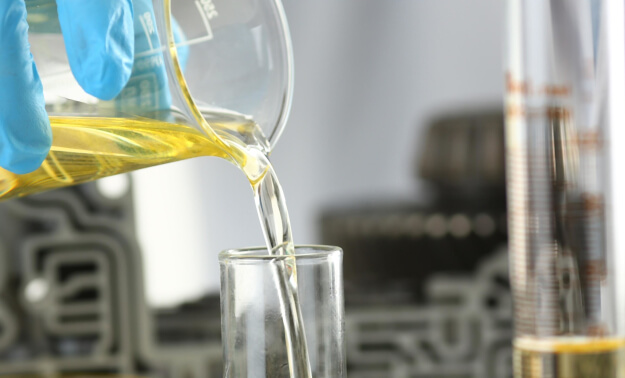A Comprehensive Guide to Reviewing Chemical Products for Optimal Integrated Solutions in Manufacturing and Beyond
In the significantly intricate landscape of manufacturing, the examination of chemical products stands as a critical consider achieving integrated remedies that focus on safety and security, efficiency, and sustainability. This extensive guide describes necessary facets such as regulatory compliance, item compatibility, and cost-effectiveness, all while stressing the value of ecological stewardship. Recognizing these parts not just mitigates dangers however also positions companies for technology and long-term development. As we check out these important aspects, the question arises: how can these assessments be transformed right into actionable strategies that thrust your organization onward?
Understanding Regulative Conformity
In the world of production, recognizing regulatory compliance is vital for guaranteeing both product security and environmental defense. Governing frameworks, such as the Occupational Security and Health And Wellness Administration (OSHA) standards and the Epa (EPA) policies, dictate the risk-free handling, storage, and disposal of chemical items. Conformity with these guidelines not only safeguards employees yet also reduces environmental impact and enhances a firm's online reputation.
Manufacturers must vigilantly assess the chemical materials they use, ensuring adherence to the appropriate safety data sheets (SDS) and labeling requirements, which give essential details regarding dangers and safe use. In addition, staying abreast of industry-specific policies, such as the Registration, Evaluation, Authorisation and Constraint of Chemicals (REACH) in Europe, is important for preserving conformity and avoiding potential legal implications.
Normal audits and training are necessary components of an extensive conformity technique, cultivating a culture of security and awareness amongst workers. By prioritizing regulatory compliance, suppliers can minimize risk, improve functional effectiveness, and add to sustainable methods within the industry, eventually causing boosted item high quality and client satisfaction.
Assessing Item Compatibility
Regulative compliance sets the structure for secure production methods, however examining product compatibility is similarly essential for functional performance and security. Chemical Products. Product compatibility refers to the capacity of different chemical materials to exist side-by-side without adverse communications that could endanger the stability of processes or items. An extensive assessment starts with understanding the chemical properties, including sensitivity, solubility, and stability under various problems
Suppliers ought to perform compatibility screening to determine possible responses that may take place when chemicals are mixed or enter call with each other. This consists of evaluating aspects such as temperature variants, pressure changes, and the visibility of impurities. It is likewise important to think about the results of materials used in containers, pipes, and tools, as these can affect chemical habits and efficiency.
In addition, manufacturers have to analyze the prospective impact of product compatibility on end-user applications. Inappropriate items can bring about functional interruptions, item failures, and safety and security risks, which can damage track record and financial standing. Therefore, a systematic approach to examining product compatibility not just boosts functional efficiency yet additionally makes sure the safety and security and integrity of chemical products throughout their lifecycle.
Assessing Cost-Effectiveness
Reviewing cost-effectiveness is vital for producers intending to maximize their chemical production procedures while preserving earnings. This analysis starts check these guys out with a complete analysis of both direct and indirect expenses connected with chemical items. Direct expenses include the acquisition price of chemicals, transportation, and storage, while indirect expenses may include labor, upkeep, and overhead expenditures.
To efficiently review cost-effectiveness, manufacturers must utilize an overall price of ownership (TCO) method. This technique makes it possible for a detailed understanding of all prices throughout the item lifecycle, from purchase to disposal. Furthermore, the usage of efficiency metrics-- such as return prices and process efficiency-- can offer insights right into just how well chemical items add to general manufacturing goals.
Benchmarking versus market criteria can additionally highlight possible locations for expense reduction or improvement. By contrasting their prices and efficiency with rivals, producers can recognize best practices and cutting-edge options.
Additionally, involving providers in conversations about prices, quantity discounts, and long-lasting contracts might yield positive economic arrangements. Eventually, a critical concentrate on cost-effectiveness sustains not just profitability however likewise sustainability in the affordable landscape of chemical manufacturing.
Studying Environmental Influence

One important facet is the option of raw products. Lasting sourcing can significantly reduce negative impacts, as renewable or much less harmful products usually bring about lower exhausts and less harmful by-products. Suppliers must take into consideration the performance of their production processes; optimizing these can decrease waste and energy usage.
Furthermore, item formula plays a vital role in determining environmental security. Making use of green chemistry concepts can lead to the advancement of safer, much less contaminating alternatives. Makers should also examine end-of-life circumstances for their products, promoting recycling or risk-free disposal techniques to reduce long-lasting ecological consequences.
Integrating these factors to consider right into product assessment not just improves business obligation however additionally straightens with increasing customer need for environmentally friendly products. Chemical Products. Inevitably, a official site complete evaluation of environmental effect is crucial for cultivating lasting production methods
Carrying Out Quality Assurance Actions
The dedication to lasting methods and environmental safety normally includes the application of quality assurance procedures within producing procedures. Quality control is essential for ensuring that chemical items satisfy predefined standards and policies, thereby protecting not only item effectiveness however additionally ecological integrity.
To successfully execute quality control actions, makers ought to take on a methodical method, beginning with the establishment of clear top quality criteria. This includes specifying specs for basic materials, intermediate items, and final results. Regular testing and inspection methods need to be set up to keep track of compliance with these standards throughout the production cycle.

Educating and engaging personnel in top quality assurance methods is equally critical. A knowledgeable workforce adds to a culture of high quality and liability, enhancing general functional performance. Ultimately, extensive quality assurance gauges not just ensure compliance but likewise strengthen the brand name's track record and foster depend on among consumers, lining up with the overarching goals of sustainability and security in the chemical manufacturing market.
Final Thought
In verdict, the assessment of chemical items demands an extensive understanding of regulatory compliance, item compatibility, cost-effectiveness, and ecological influence. This guide serves as a necessary source for achieving these vital purposes in chemical product examination - Chemical Products.